Have you ever wondered how completely different worlds can encounter and live next to each other? Some of the famous Komodo Islands are populated by ancient predators, representing geological ages when the reptiles ruled the world. But underneath, not too far from the glittering surface of the fencing seas, a vibrant and similarly ancient ecosystem reveals its beauty for the determined divers.
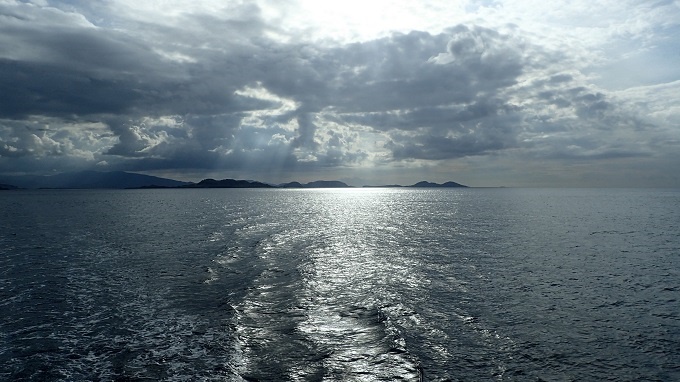
Csaba Sellei • Olympus Tough TG-4
When approaching the selected dive spot, you are mesmerized by the dancing light across the water and can hardly wait for descending and being immersed in the charming underwater kingdom awaiting and inviting you.
The enchanting land at the edge of the Indonesian archipelago is full of fascinating attractions. When approaching it from the air, you will easily recognize the charm of the scattered islands in the sea. Their unique shape and exposed slopes indicate the uncontrolled power of underground forces which created these stunning volcanic formations. Probably one of the factors which may influence the fertility of the nutrient rich Komodo waters are the volcanic rocks forming the seabed.
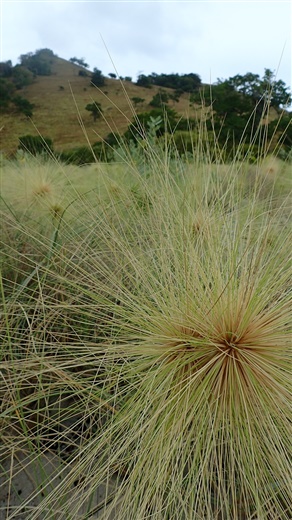
Csaba Sellei • Olympus Tough TG-4
So, prepare yourself and set up your underwater gear. We go in for diving! Normally, the water is clear enough and the visibility is great most of the times, but tide cycles can change it quickly. Standard UW equipment is supposed to be reliable for most conditions and in addition, the wide-angle solution would provide a magnificent underwater landscape with a spacious seabed and large scale bottom formations. I set up the following: OLYMPUS OM-D-EM-1 with standard M.Zuiko Digital ED 12-50mm f3.5-5.6 EZ lens, one INON UCL-165M67 Close-up lens with two INON YS-01 strobes on medium long arms. This assembly is good for general purposes plus macro shots, which is truly an attractive feature of the fringing reefs here.
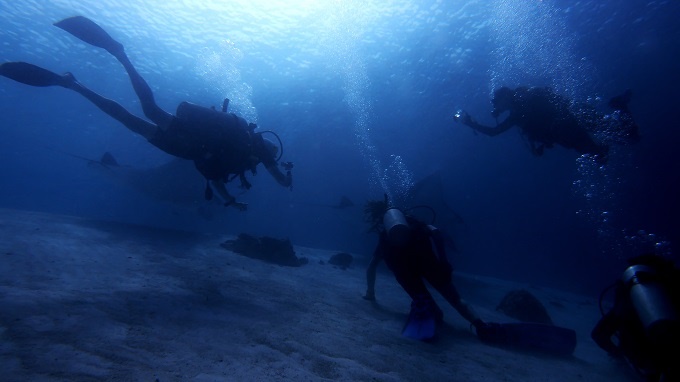
Csaba Sellei • OM-D EM-1 • M.Zuiko Digital ED 12-50mm F3.5-5.6 • PT-EP11
In medias res, so to speak, let us begin with this eccentric fellow. This one looks like a classic rover riding on a pleasant stream of sea water. Long hair like someone from the famous Easy Rider movie. But the orangutan crab is starring at us which adds a mesmerizing feeling to the diving experience. It slow movements and its cool behaviour make it hard to spot but once you do spot it, you might wonder how this tiny creature could develop such a hairy look. Is the orangutan in Borneo the closest relative to the orangutan in the animals’ kingdom on land? Or have the two species ever organized a meeting where shared the latest achievements in developing camouflage technics? Not really. But still, this crab magically resembles the hairy orangutan living on the trees and hanging around slowly.
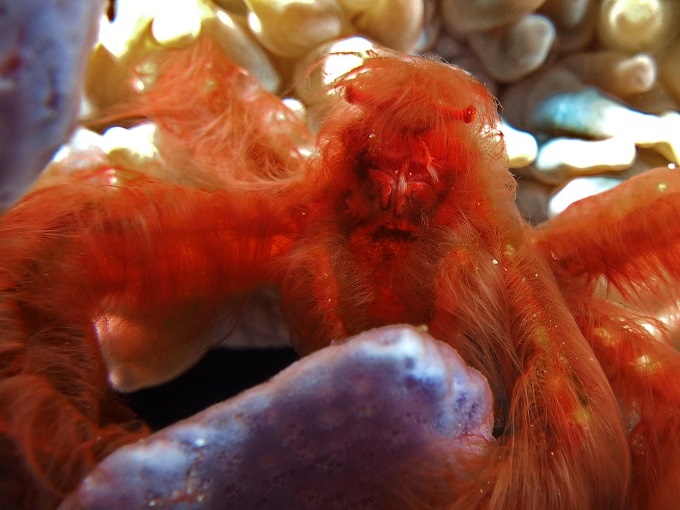
Csaba Sellei • OM-D EM-1 • M.Zuiko Digital ED 12-50mm F3.5-5.6 • INON UCL-165M67
• PT-EP11 • Sea&Sea YS-01
Makassar Reef is on the bucket list of many divers, understandably. Long drifts push you across the open sea, then finally you arrive at the mantas’ social area where those magnificent creatures are hanging around and posing. You can take the advantage of cleaning stations to encounter them but it is recommended to keep some distance to not disturb them too much. Here, you better shoot with wide angle lenses, otherwise you are in trouble when trying to squeeze those majestic creatures in one single frame (see picture). Try to catch the right moment when you pull the trigger, be patient and watch the seabed underneath, too (see urchins aggregations all around).
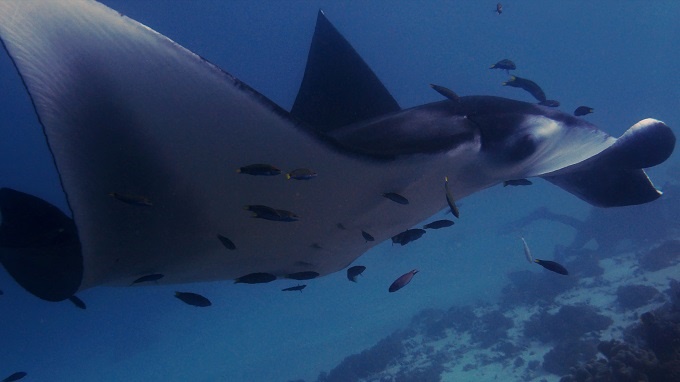
Csaba Sellei • OM-D EM-1 • M.Zuiko Digital ED 12-50mm F3.5-5.6 • PT-EP11
On the other side of the scale, the macro world is claiming its well-deserved appreciation. Komodo is like the finest blend of exotic spices and can offer a full spectrum of underwater diversity. Now we are getting closer to see more details and adore the limitless fantasy and perfectly developed camouflage technics of the smallest critters. The hairy lobster lives in the barrel sponge between the lobes and normally never leaves its safe place. But it has very sharp eyes and can spot the approaching divers very easily. Get ready for practicing endless patience and consider applying gentle tricks to meet it face to face.
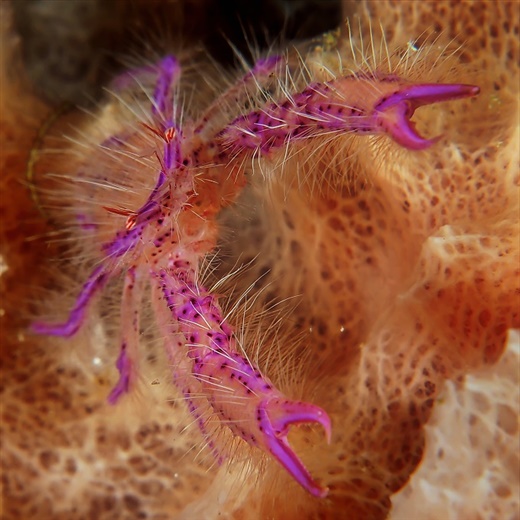
Csaba Sellei • OM-D EM-1 • M.Zuiko Digital ED 12-50mm F3.5-5.6 • INON UCL-165M67
• PT-EP11 • Sea&Sea YS-01
The other competitor lives on fan corals (Gorgonian) and it is easy to figure out why the pigmy seahorse insists to stay on the coral all the time. It applies one of the most developed camouflage technics and is without doubt very hard to distinguish from the coral branches. This is a classic macro theme: hard visual hunting, preparing your light and considering the depth of field while maintaining perfect buoyancy. Nonetheless, you will definitely enjoy this enchanting encounter.
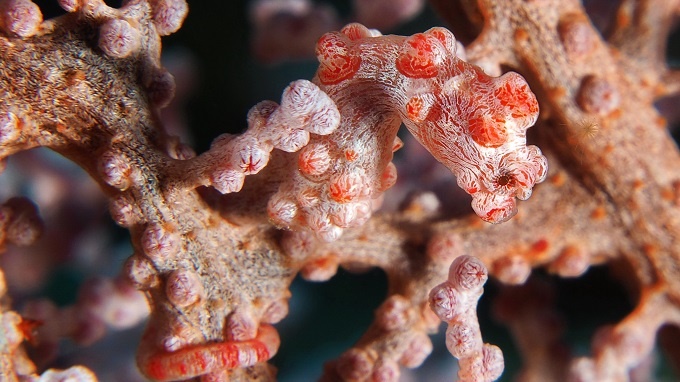
Csaba Sellei • OM-D EM-1 • M.Zuiko Digital ED 12-50mm F3.5-5.6 • INON UCL-165M67
• PT-EP11 • Sea&Sea YS-01
At a dive site quite nearby, a curious face will most likely have your attention: the bicolour coral blenny looks out the windows of its well situated flat, to tell the truth it’s got a perfect view and a comforting safe place in this underwater suburb area. Gentle currents bring the food to the place like a fast delivery service while the healthy coral provides protection like a living shield. In summary, warm tropical water, sunshine, pleasant neighbours, food d at hand: who would not be envious of this harmless critter’s life? But be cautious not to be eaten!
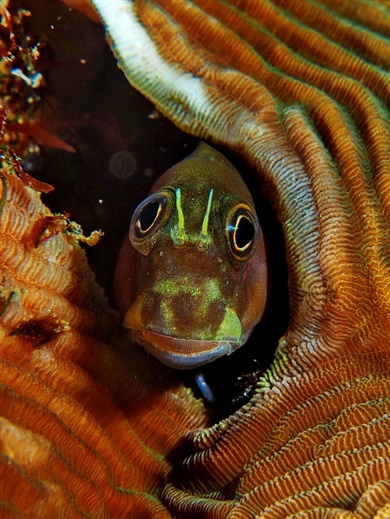
Csaba Sellei • OM-D EM-1 • M.Zuiko Digital ED 12-50mm F3.5-5.6
• INON UCL-165M67 • PT-EP11 • Sea&Sea YS-01
Vibrant underwater life, sensational topography (even in the water, too), thrilling drift dives, diverse dive sites and much more: Komodo can offer the best of the best to an enthusiastic underwater photographer.
Author and Photographer: Csaba Sellei
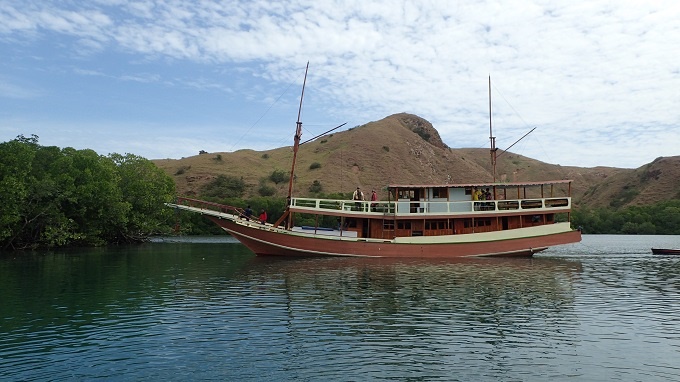
Csaba Sellei • Olympus Tough TG-4
Comments
Show more comments (14)